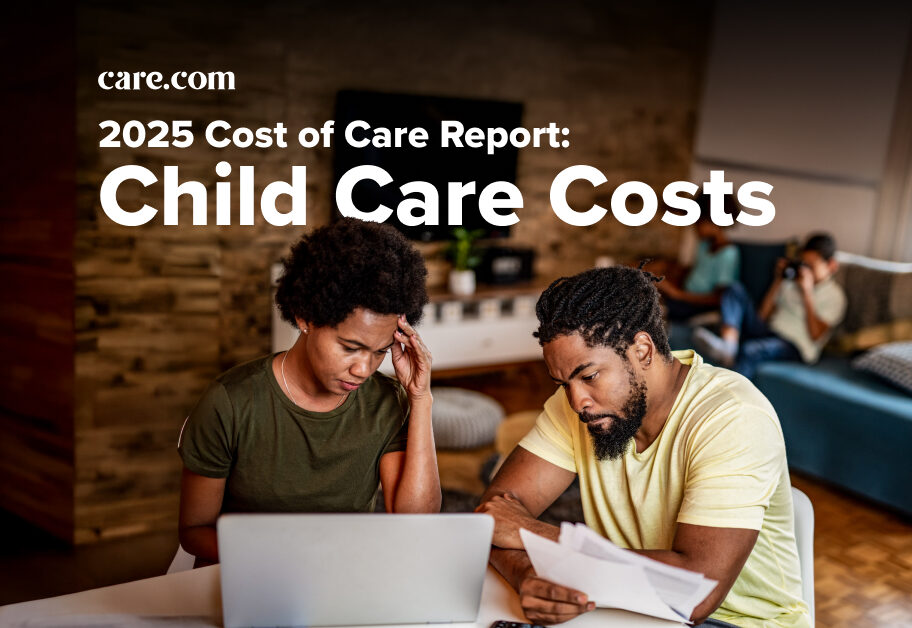Results from the 12th annual Care.com 2025 Cost of Care Report once again highlight the significant financial strain child care costs place on U.S. families. Based on feedback from 3,000 parents, the report reveals how these exorbitant expenses impact household incomes and savings, underscoring the broader social and economic effects of child care affordability.
“The cost of child care today has parents fighting an unrelenting battle they stand no chance in winning,” says Sean Lacey, general manager, child care, for Care.com. “They’re being stretched beyond their limits — cutting back spending on essentials, taking on extra work or even stepping away from their careers to afford care for their kids. Parents need relief, and they need it now, or we will continue witnessing parents putting themselves into an inescapable financial ruin that, for many, could be impossible to recover from.”
In this article
- Key findings on the cost of child care in 2025
- The average cost of child care
- Impact of high child care costs
- The overlooked cost of family caregiving
- The need for affordable child care solutions
- Child care costs are just the tip of the iceberg
- Resources from Care.com
- 2025 Cost of Care Report methodology
- Previous Care.com Cost of Care reports
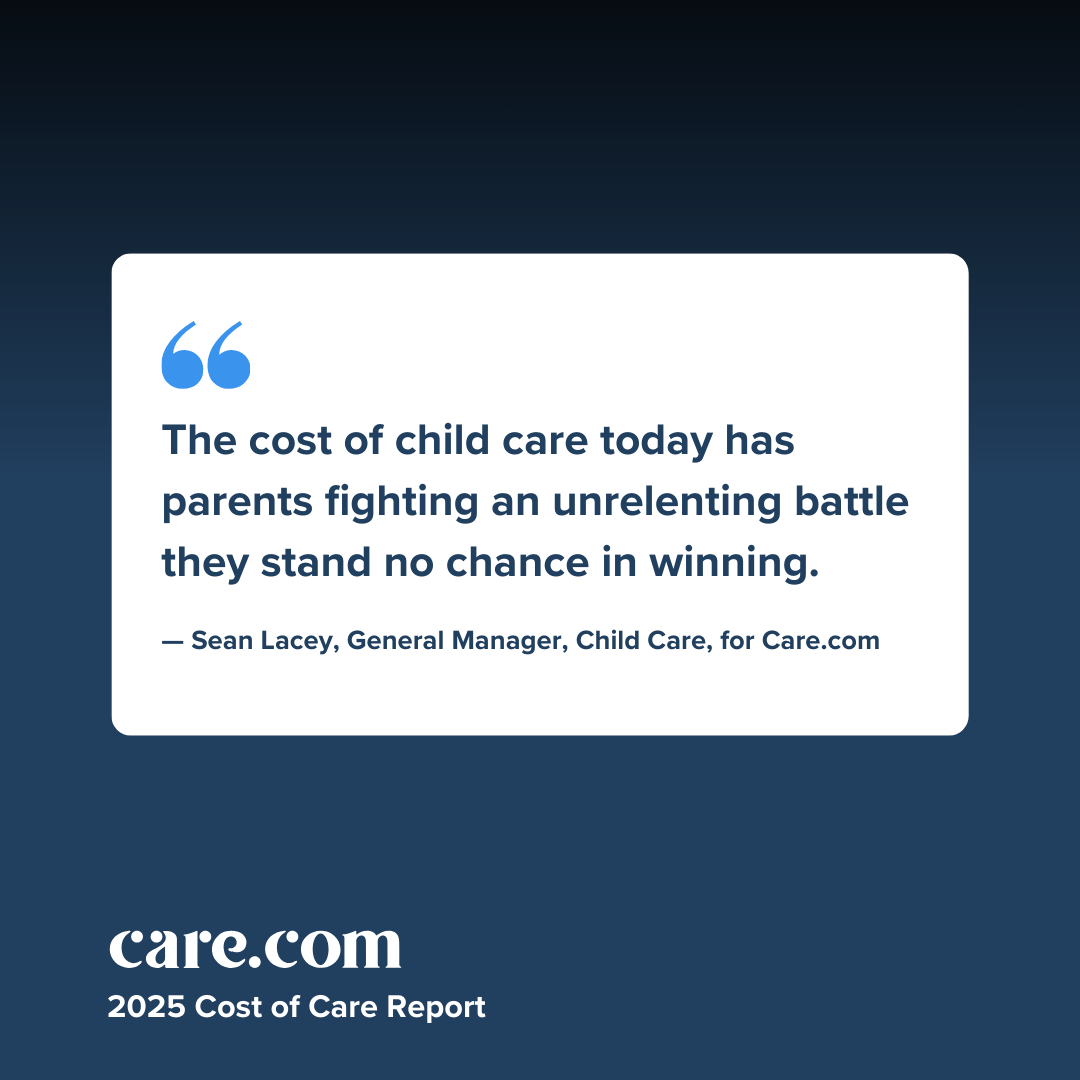
Key findings on the cost of child care in 2025
New data on the cost of child care from the 12th annual Care.com 2025 Cost of Care Report reveals:
★ The cost of child care takes a hefty toll on household income and savings: Parents say they’re spending a whopping 22% of their household income on child care with the average parent depleting a reported one third (29%) of their savings on child care costs alone.
★ Child care costs are just one part of the family caregiving story: According to the 2025 report, the child care price tag is only one piece of the family caregiving puzzle. In fact, the average parent reveals they are responsible for five care arrangements for children, as well as aging parents and pets, and any costs that go along with managing that care.
★ Parents want meaningful cost solutions: Most parents seek government support, with 87% valuing expanded tax credits for care expenses as helpful. In addition, 79% of parents believe employers should help ease the burden by offering subsidized caregiving benefits.
The average cost of child care
Here are the average posted weekly child care costs, including nannies, babysitters, daycare and family care centers, broken down by age and number of children:
- Average weekly nanny cost: $827 (up 8% from $766 in 2023).
- Average weekly daycare cost: $343 (up 6.9% from $321 in 2023).
- Average weekly family care center cost: $344 (up 50% from $230 in 2023).
- Average weekly babysitter cost: $167 (down 13% from $192 in 2023).
Infant child care cost per week
| Infant care costs | 2024 | 2023 |
| One child | ||
| Nanny | $827 | $766 |
| Daycare | $343 | $321 |
| Family care center | $344 | $230 |
Toddler child care cost per week
| Cost of toddler care | 2024 | 2023 | 2024 | 2023 |
| One child | Two children | |||
| Nanny | $858 | $755 | $911 | $764 |
| Daycare | $315 | $293 | $599 | $556 |
| Family care center | $319 | $219 | $606 | $416 |
Babysitter cost per week
| Babysitter costs | 2024 | 2023 | 2024 | 2023 |
| One child | Two children | |||
| After-school sitter | $316 | $292 | $332 | $305 |
| Babysitter | $167 | $192 | $178 | $189 |
– Nanny weekly rates account for 40 hours per week and are based on Care.com job post data (full-time care).
– All two children rates for daycare and family care centers were calculated by adding the weekly rate for one child and the weekly rate for the second child with a national average sibling discount of 10%.
– Babysitter weekly rates account for 8 hours per week, are not age limited, and are based on Care.com job post data (one-time and part-time care).
– After-school sitter weekly rates account for 15 hours per week, are not age limited, and account for job posts on Care.com for recurring, after-school hours babysitting.
Check out our Cost of Care Calculator to estimate hourly child care costs for in-home care in your city.
Impact of high child care costs
Year after year, the cost of child care continues to be one of the largest expenses for U.S. families, and its financial impact is ravaging household incomes, as well as savings. To put this in perspective, the U.S. Department of Health and Human Services (HHS) deems 7% of family income as the benchmark for affordable child care. However, according to the findings in the Care.com 2025 Cost of Care Report, the average parent says they spend 22% of their household income on child care costs. That’s more than triple what’s deemed “affordable” for families.
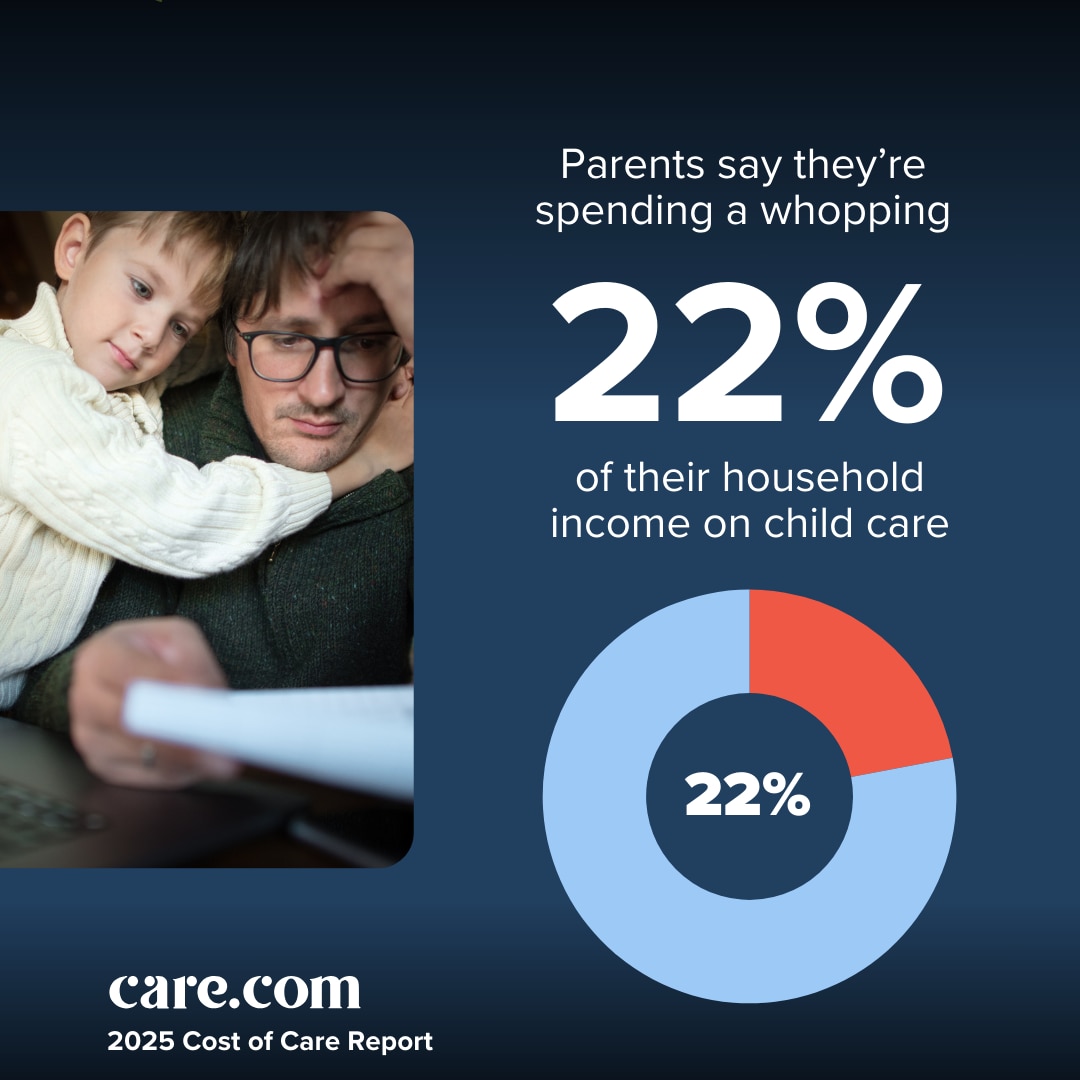
Put in dollar terms, the typical parent (57%) paid at least $9,600 on child care costs in 2024. Further, parents report spending, on average, nearly a third (29%) of their savings on the cost of child care alone.
The overlooked cost of family caregiving
The in-depth findings from this year’s Care.com 2025 Cost of Care Report reveal that the financial burden around the cost of care goes beyond the price of child care. In fact, parents surveyed report being responsible for five different care arrangements, from babysitters and daycare to relatives and more.
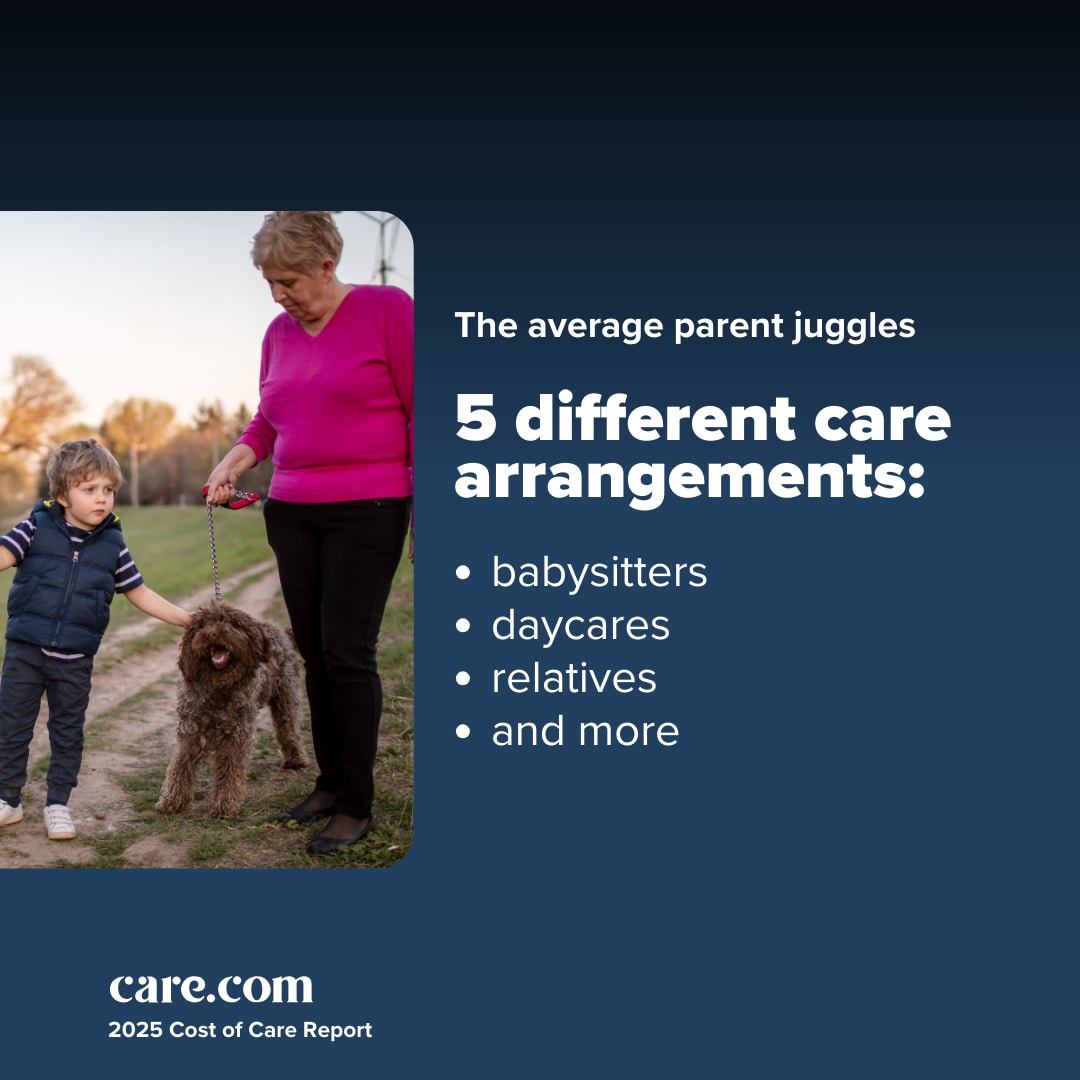
That means, beyond the steep repercussions that come with the crushing cost of child care, the average parent spends 18% of their household income on other caregiving costs — and that’s on top of the 22% that goes to child care. When you add in these care expenses, the dollar amount that families spent on care costs in 2024 jumped from $9,600 to $14,400.
These costs are, no doubt, pushing family finances to their limit, and, in turn, many parents (33%) say they dipped into their savings to afford care. In addition, almost all (89%) of respondents — or their partner/spouse — had to make at least one major change to their work, life or finances to afford care last year.
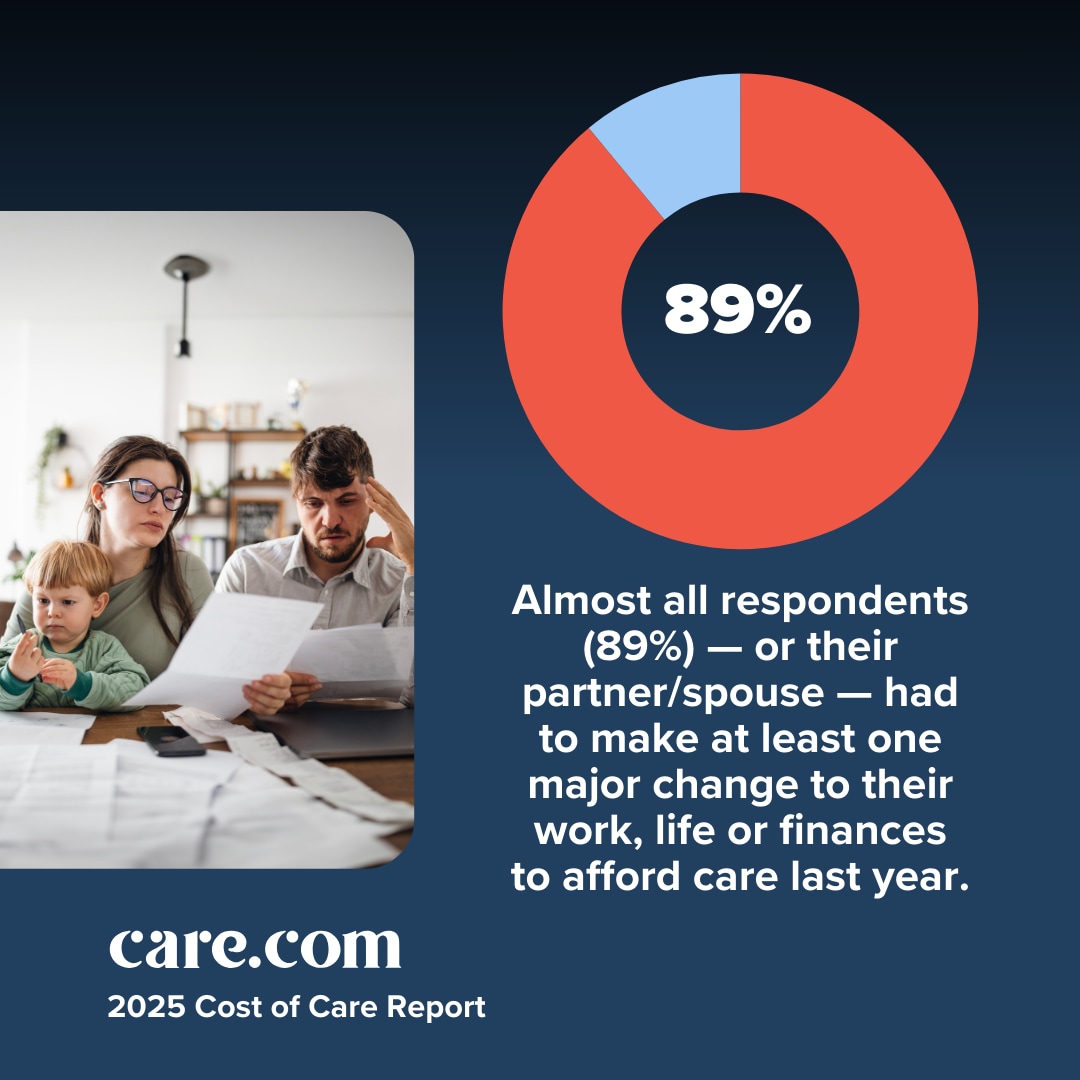
Here’s a breakdown of these noteworthy changes parents made:
- 40% – Reduced spending on entertainment and leisure activities.
- 37% – Relied on friends or family to help with child care.
- 32% – Delayed major purchases.
- 24% – Took on multiple jobs.
- 22% – Chose a less expensive care option.
- 21% – Applied for government assistance.
- 20% – Went into debt.
- 15% – Reduced hours at work.
- 15% – Juggled remote work without paid child care.
- 14% – Moved closer to family.
- 13% – Changed jobs.
- 9% – Deferred paying student loans.
- 8% – Moved to a different home.
- 7% – Left the workforce.
- 6% – Quit education/studies.
- 5% – Set up a nanny share.
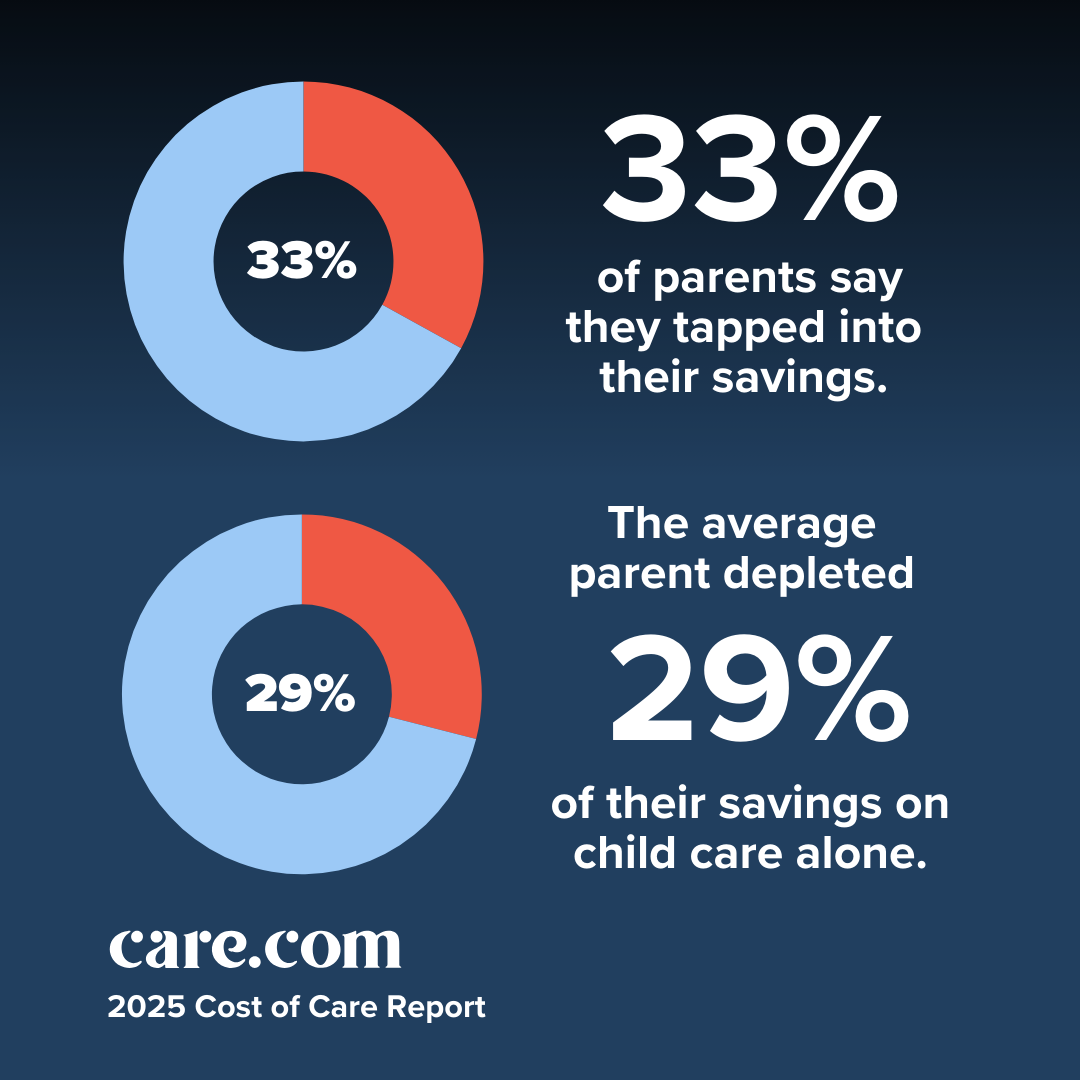
The need for affordable child care solutions
Parents must be able to afford the care they need, yet many struggle with the high cost. To ease this burden, the majority look to government and employer support:
- 87% of parents believe expanded tax credits for child care expenses would help address the challenges of finding and managing care.
- 79% of parents see a role for employers in reducing these burdens through subsidized caregiving benefits.
If implemented, these initiatives could help ease financial strain, one of the most significant stressors in parents’ lives.
Child care costs are just the tip of the iceberg
Read the full Care.com 2025 Cost of Care Report to learn more about:
- The broader emotional and mental strain of caregiving.
- Other causes of parental stress beyond financial concerns, such as never-ending care searches and missed moments in parents’ lives.
- The true cost of caring for the entire household — including kids, aging loved ones, pets and more.
Resources from Care.com
For families
- As leaders in this space, we are committed to providing solutions. Read: The true cost of care: How we can build a better future for families and caregivers in 2025 for more information on what Care.com is doing to help.
- Don’t miss our new Toolkit for Families for helpful information on how to reduce the stress and cost of care — including ways in which Care.com can help, information on tax credits and subsidies and tips on how to advocate for financial support with employers and lawmakers. >> Download the free toolkit
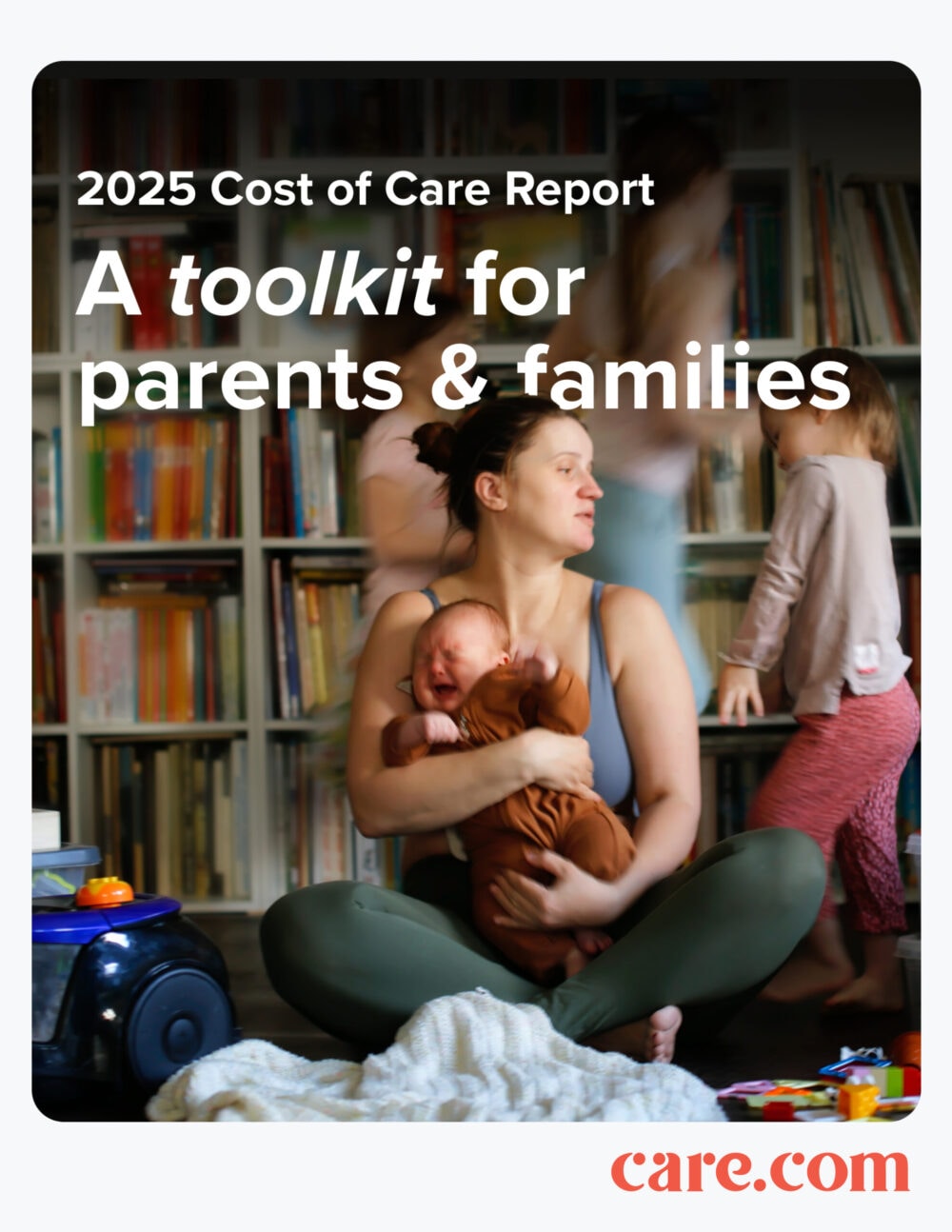
- Need care now? Find background-checked child care, senior care, adult care, pet care and housekeeping all in one place. >> Join Care.com now
Additional resources
- Child care across party lines: A Q&A with Senators Tim Kaine and Katie Britt
- Affordable child care options and tips for saving money
- 9 child care subsidies every family should know about
- The complete guide to hiring a nanny
- 6 ways to cut the cost of hiring a nanny
- Nanny vs. daycare: Pros, cons, cost and how to decide which is best for you
- What is a part-time nanny — and do you need one?
- How much does a nanny share cost?
2025 Cost of Care Report methodology
This sample of 3,000 U.S. adults was surveyed between November 11, 2024, and November 20, 2024. All respondents are parents of children 14 years or younger and currently pay for professional child care, confirmed by both consumer-matched data and self-confirmation. DKC Analytics conducted and analyzed this survey with a sample procured using the Pollfish survey delivery platform, which delivers online surveys globally through mobile apps and the mobile web along with the desktop web. The survey valid completion rate was 75%. No post-stratification has been applied to the results.
